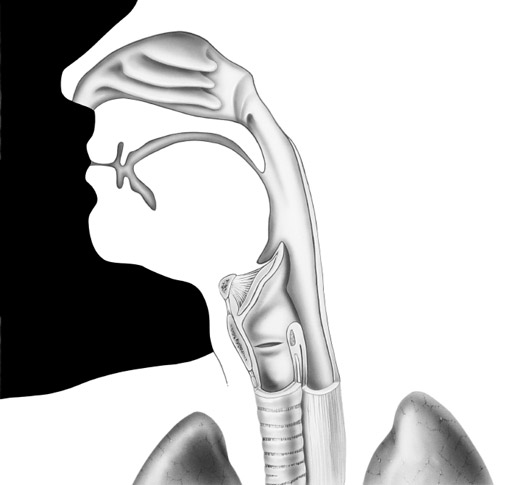Chapter 4 - Managing the airway in an injured athlete
Aims of this chapter
- Understand the basic anatomy of the airway
- Recognise the importance of an open airway
- Appreciate the difference between a complete or partially obstructed airway.
- Understand the basic airway manouvres jaw thrust and head tilt chin lift.
- Appreciate that an airway full of blood or vomit may need urgently moving on to his side.
Introduction
The airway refers to the passage from the mouth and nose, over the tongue, down the back of the throat (pharynx), through the voice box (larynx) and into the windpipe and airways (trachea and bronchi). The airway is of prime importance as if this is blocked, then air cannot pass in and out of the lungs to deliver oxygen to the body and take waste carbon dioxide away. So, if a blocked airway can be fatal, ensuring it is open is the utmost priority in all casualties.
The airway is said to be “open” when breathing means air passes freely and quietly through the mouth and nose and down into the lungs and back out again.
The airway can be:
- Open
- Partially obstructed
- Completely obstructed
Airways can be become obstructed with soft tissues (tongue), foreign bodies (teeth), blood or vomit or due to injury to the airway, e.g. larynx.

The human pharynx & larynx